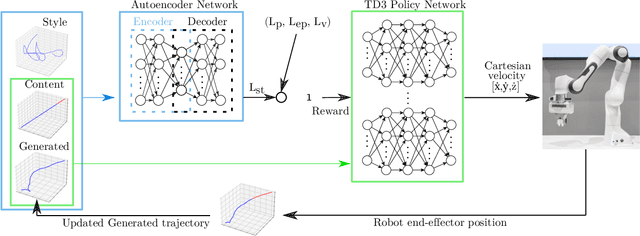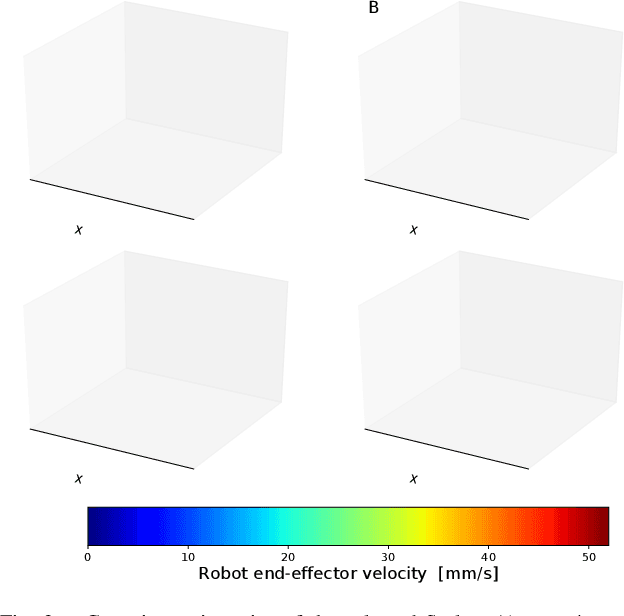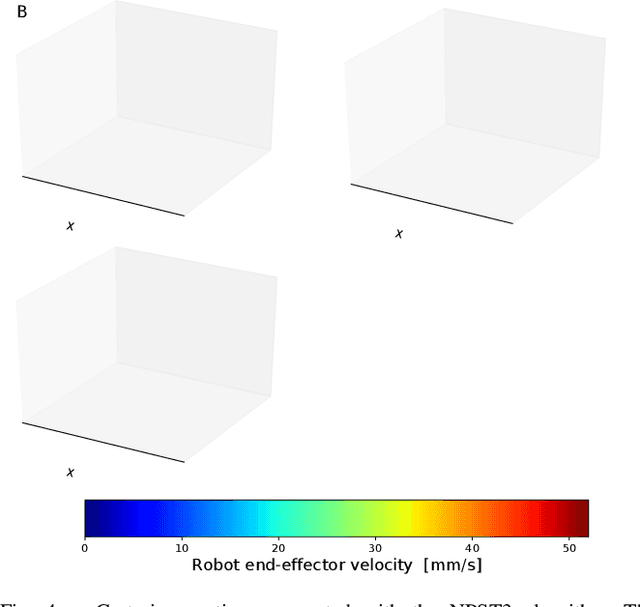Marco Aggravi
Neural Style Transfer with Twin-Delayed DDPG for Shared Control of Robotic Manipulators
Feb 01, 2024



Abstract:Neural Style Transfer (NST) refers to a class of algorithms able to manipulate an element, most often images, to adopt the appearance or style of another one. Each element is defined as a combination of Content and Style: the Content can be conceptually defined as the what and the Style as the how of said element. In this context, we propose a custom NST framework for transferring a set of styles to the motion of a robotic manipulator, e.g., the same robotic task can be carried out in an angry, happy, calm, or sad way. An autoencoder architecture extracts and defines the Content and the Style of the target robot motions. A Twin Delayed Deep Deterministic Policy Gradient (TD3) network generates the robot control policy using the loss defined by the autoencoder. The proposed Neural Policy Style Transfer TD3 (NPST3) alters the robot motion by introducing the trained style. Such an approach can be implemented either offline, for carrying out autonomous robot motions in dynamic environments, or online, for adapting at runtime the style of a teleoperated robot. The considered styles can be learned online from human demonstrations. We carried out an evaluation with human subjects enrolling 73 volunteers, asking them to recognize the style behind some representative robotic motions. Results show a good recognition rate, proving that it is possible to convey different styles to a robot using this approach.
 Add to Chrome
Add to Chrome Add to Firefox
Add to Firefox Add to Edge
Add to Edge